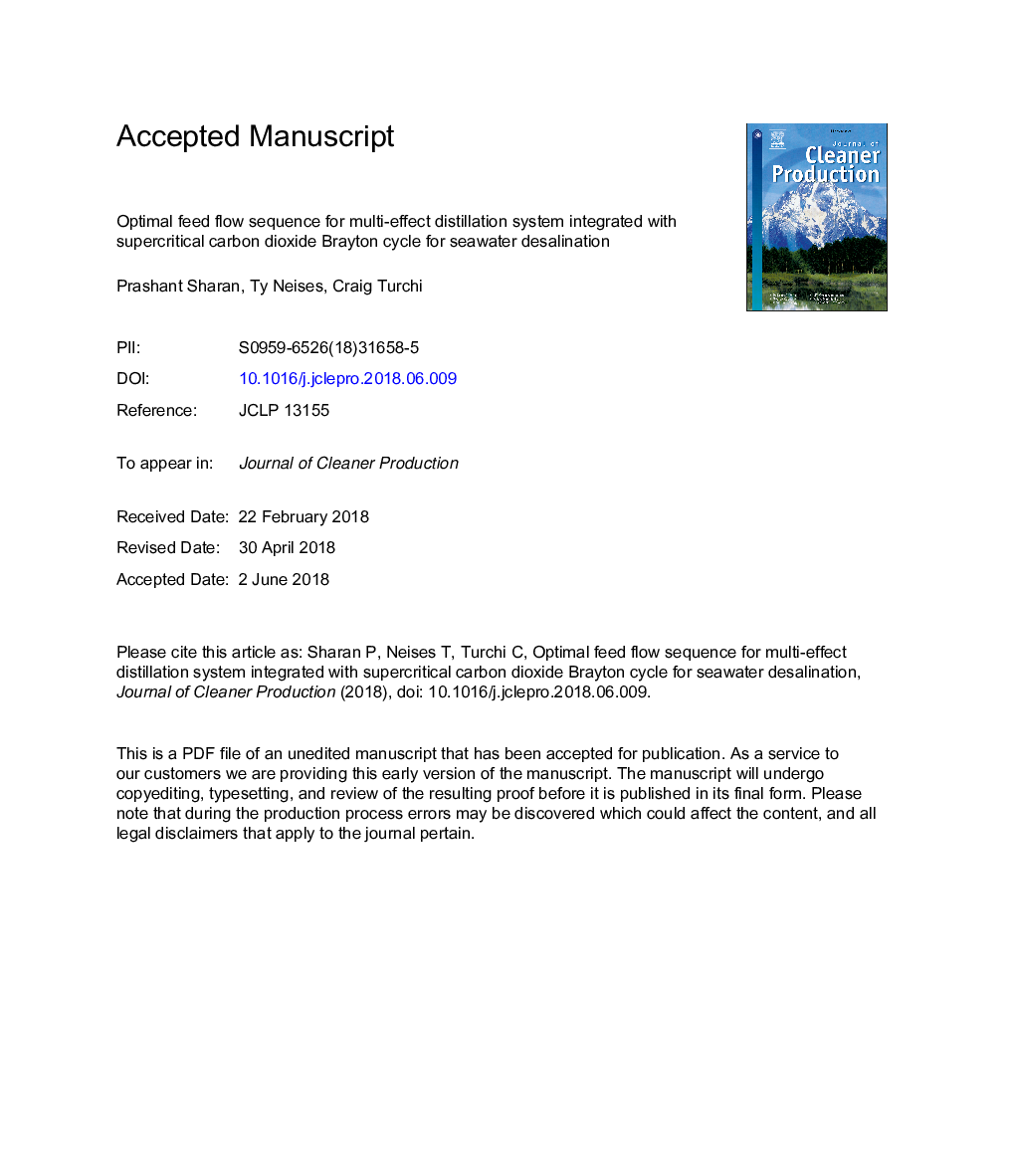| کد مقاله | کد نشریه | سال انتشار | مقاله انگلیسی | نسخه تمام متن |
|---|---|---|---|---|
| 8094026 | 1522057 | 2018 | 43 صفحه PDF | دانلود رایگان |
عنوان انگلیسی مقاله ISI
Optimal feed flow sequence for multi-effect distillation system integrated with supercritical carbon dioxide Brayton cycle for seawater desalination
دانلود مقاله + سفارش ترجمه
دانلود مقاله ISI انگلیسی
رایگان برای ایرانیان
کلمات کلیدی
موضوعات مرتبط
مهندسی و علوم پایه
مهندسی انرژی
انرژی های تجدید پذیر، توسعه پایدار و محیط زیست
پیش نمایش صفحه اول مقاله

چکیده انگلیسی
Multi-effect distillation is often integrated with a Rankine power cycle for cogeneration (simultaneous production of power and desalinated water). Such integration increases the condenser operating pressure for the Rankine cycle (and increases the heat-rejection temperature) to produce desalinated water, resulting in decreased power-plant efficiency. The supercritical carbon dioxide Brayton cycle has a higher efficiency compared to the Rankine cycle. The waste heat rejected from supercritical carbon dioxide Brayton cycle is at sufficiently hot temperature to have feasible energy integration with multi-effect distillation system. The paper introduces the novel concept of cogeneration without being a parasitic load to the power cycle. For the illustrative example considered, integrating 4-effect distillation system with a 115 MWe power plant can produce 3041â¯m3 of distillate per day at 1.06 $/m3, at a constant power plant efficiency of 49.2%. The pattern in which feed enters the desalination system often dictates its energy consumption. The two most commonly used feed configurations for multi-effect distillation system are parallel/cross feed and forward feed. With steam as a heat source (i.e., a latent heat source), parallel/cross feed is the most energy-efficient feed configuration. The other objective of this paper is to identify the optimal feed flow configuration for multi-effect distillation system integrated with a supercritical carbon dioxide power cycle (i.e., a sensible heat source). For the simplified network, forward feed is the best feed configuration, which yields a 7.5% increase in distillate production at 2.6% reduced distillate cost. Additionally, different methods for reducing the brine discharge are studied, which can help to achieve zero liquid discharge. Result show increasing the maximum brine concentration gives superior results compared to brine recycling. The system modelling is done using the principle of process integration, and an analytical methodology for cogeneration is derived.
ناشر
Database: Elsevier - ScienceDirect (ساینس دایرکت)
Journal: Journal of Cleaner Production - Volume 196, 20 September 2018, Pages 889-901
Journal: Journal of Cleaner Production - Volume 196, 20 September 2018, Pages 889-901
نویسندگان
Prashant Sharan, Ty Neises, Craig Turchi,